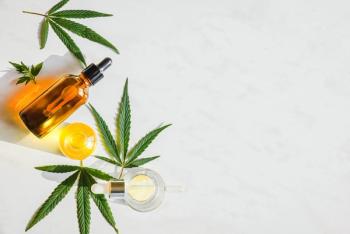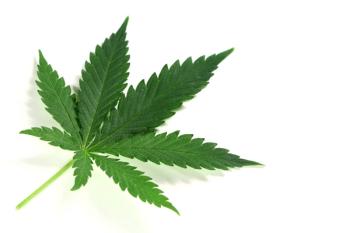
Cannabis Science and Technology
- November/December 2018
- Volume 1
- Issue 4
Professor Jack Henion Shares Insights on Cannabis Research, Academia, and the Expanding Role of Mass Spectrometry

Professor Jack Henion shares his insights on cannabis research, including challenges and opportunities in moving cannabis science forward.
Cannabis analytical testing is rapidly expanding beyond cannabis quality control testing to academic, pharmaceutical, and clinical markets. Mass spectrometry is also playing a critical role in this evolution. In this month’s “Cannabis Crossroads,” Professor Jack Henion shares his insights on cannabis research, academia, and mass spectrometry, including challenges and opportunities in moving cannabis science forward.
It seems most analytical scientists have an “ah ha!” moment when they realize the incredible opportunities in cannabis science. When did you start to see these opportunities, and how did you first get involved in cannabis science?
Professor Jack Henion: I actually had two “ah ha” moments. The first was as an analytical chemist I was intrigued to see how analytical methodologies and technologies used for cannabis were not as technologically current as those in the good laboratory practice-regulated pharmaceutical bioanalytical world with which I was familiar. This coupled with the chemical complexity and diversity of the many cannabis cultivars and the importance of accurate and reliable analyses suggested that perhaps I could contribute to improving the analytical sciences used in this growing industry. However, the real excitement, or second “ah ha” moment for me, occurred when I attended the first Cannabis Science Conference in 2016 where I witnessed compelling testimonials of the very positive medicinal marijuana benefits afforded to certain disease sufferers. A common successful business model is to “find a need and fill it.” I was convinced this was an exciting new field where I could perhaps contribute to “filling a need” by providing positive contributions to supporting the scientific integrity of this new industry through high-quality analytical techniques and technology. I remain excited about working within and contributing to this fast-paced, evolving industry.
Every scientist that I meet with struggles in some way with analyzing cannabis. What hurdles did you first experience in working with cannabis and how did you overcome them?
Henion: Our experience with marijuana plant materials to-date is somewhat limited because we do not yet have a Schedule I controlled substances license from New York State. We have applied for this license, but do not yet have it. As a result, I have focused on the analysis of hemp plant materials and products which of course must contain less than 0.3% tetrahydrocannabinol (THC). I would not say that the analysis of these plant materials is particularly difficult. In contrast to my experience with parts-per-billion (ppb) and sub-ppb bioanalysis of drugs and their metabolites in biological fluids, quantifying the important cannabinoids in hemp and marijuana is relatively easy because the levels are much higher (percent levels) and the matrix is much less complex than blood or urine. In contrast, the accurate and precise quantitative determination of as many as 100 pesticides at low ppb levels in marijuana plant materials is of course more challenging. Plant sample preparation when handling large sample numbers needs some advancement, but the technologies and methods available when properly applied are not that difficult. Of course, there are additional quantitative measurements needed such as for terpenes, flavonoids, mycotoxins, and heavy metals, which in some cases require different sample preparation techniques and instrumentation. Thus, a “total analysis” of a cannabis plant sample is not just one sample preparation technique followed by an injection into one analytical system. It is a series of related, but different procedures.
You have started lecturing on cannabis and hemp at Cornell University. What were some of your takeaway messages and how were those lectures received?
Henion: I recently gave a lecture to the Cornell BioEngineering MS graduate students where I focused on the importance and benefits of collaboration and innovation in science and business development. I described the rapidly developing cannabis industry as a new frontier with many technology development opportunities for these students in their bioengineering careers. I received many inbound inquiries after this lecture, which suggests I struck a chord of interest and excitement with these students by sharing with them some industry intellect regarding opportunities in the cannabis and hemp industries.
Additionally, I recently presented two lectures at the annual Cornell Veterinary Conference at the Cornell University College of Veterinary Medicine, Ithaca, NY (1). There is growing interest and acceptance, especially among companion animal veterinarians for the use of cannabidiol (CBD) oils and related products to manage pain and other ailments for their “patients.” These lectures included a “tutorial” on liquid chromatography–mass spectrometry (LC–MS) and related techniques showing methods used for the analysis of hemp and marijuana plant materials as well as a second lecture on the comparison of analytical results from commercial veterinary oils, tinctures, and so forth versus what is listed on the labels. My message was caveat emptor since often the product label does not accurately reflect what is in the bottle. The veterinarians in the audience appeared to be very interested in these topics.
As a pioneer and leader in mass spectrometry, can you please comment on its role in cannabis science?
Henion: I believe mass spectrometry is an essential component for the credible growth and acceptance of the cannabis industry. I, of course, can be accused of being “overly prejudiced” in my interest and support of MS as a detector and, in particular, LC–MS techniques. In my early days of racehorse drug testing where our analytical results would have to stand up to legal scrutiny in court, my students used to call the mass spectrometer the “truth machine.” Currently, there is no other detector for the determination of organic compounds that provides the sensitivity, selectivity, and speed for the money than MS. When MS is coupled to gas chromatography (GC) and for even wider applications, LC (or best with ultrahigh-pressure liquid chromatography [UHPLC]), one has unequaled analytical capabilities. I worry a bit about the current unchallenged interest in LC–photodiode-array detector (PAD) for cannabis potency determinations because we know there are chemical entities in the sample matrix that can coelute or interfere with photodiode-array detection. If LC–MS techniques could be competitively priced and coupled with ease-of-use, I would prefer to use those techniques for potency determinations rather than LC–PAD. But that should be left up to the individual laboratory and its leadership.
Please comment on what is next for you in cannabis science. What business and research projects are you working on that you can share with us?
Henion: As you may perceive from my comments above, I am very excited to participate in and hopefully contribute to maintaining a high degree of scientific excellence used in the analysis of any cannabis-related samples. This pertains to plant materials for potency and pesticides as well as the rapidly increasing diverse array of commercial products. I have heard reference to the “wild, wild west” nature of some current procedures and policies in the medical marijuana world. The days of “snake oil” sales pitches and unsubstantiated product promises should not return because it will diminish the credibility and potential of this exciting field. I have proposed that Advion, Inc., establish a “Cannabis CRO” and plans for that are underway. It is my goal to establish and maintain a state-of-the-art laboratory that maintains the highest level of scientific analytical services. In the meantime, we are carrying out applied research in sample preparation and LC–MS analysis techniques for hemp-based plants and products to improve upon analytical procedures currently used. To have a ready source of fresh hemp plant materials, this past summer I qualified as an approved “Cornell Affiliate” hemp grower under a permit issued by the New York State Agriculture and Markets and collaborated with Cornell University to grow a small hemp plot on my personal farm near Ithaca, NY. So, now I know a little bit about growing and analyzing hemp.
Are there any additional comments you would like to make regarding the future of cannabis science?
Henion: I believe medicinal marijuana and its promising industry will be part of the future. However, we have a very steep learning curve ahead of us. Academic research is thwarted because of misguided opinions and funding is limited for similar reasons. The good news is, I believe, this will change with time and that in fact there are many exciting opportunities ahead. My plea is for the maintenance of scientific and business integrity such that the benefits and opportunities remain available for all. As Nike says, let’s “just do it.”
About the Interviewee
Dr. Jack Henion is an internationally recognized leader in the field of MS and LC–MS. He is credited with 13 patents and has published more than 200 peer-reviewed papers in scientific journals. In addition to vast industrial experience, Dr. Henion managed a major research laboratory at Cornell University, where he served as a professor of toxicology for more than 24 years and is now Emeritus Professor of Analytical Toxicology.
About the Columnist
Joshua Crossney is the columnist and editor of “Cannabis Crossroads” and a contributing editor to Cannabis Science and Technology magazine. Crossney is also the president and CEO of CSC Events. Direct correspondence to:
Reference
How to Cite This Article
J. Crossney, Cannabis Science and Technology 1(4), 60-61 (2018).
Articles in this issue
about 7 years ago
Certified Reference Material Manufacturing Challengesabout 7 years ago
Error, Accuracy, and Precisionabout 7 years ago
Supplier Profiles: Other Servicesabout 7 years ago
Supplier Profiles: Manufacturing and Processingabout 7 years ago
Supplier Profiles: Cultivation/GrowingNewsletter
Unlock the latest breakthroughs in cannabis science—subscribe now to get expert insights, research, and industry updates delivered to your inbox.




